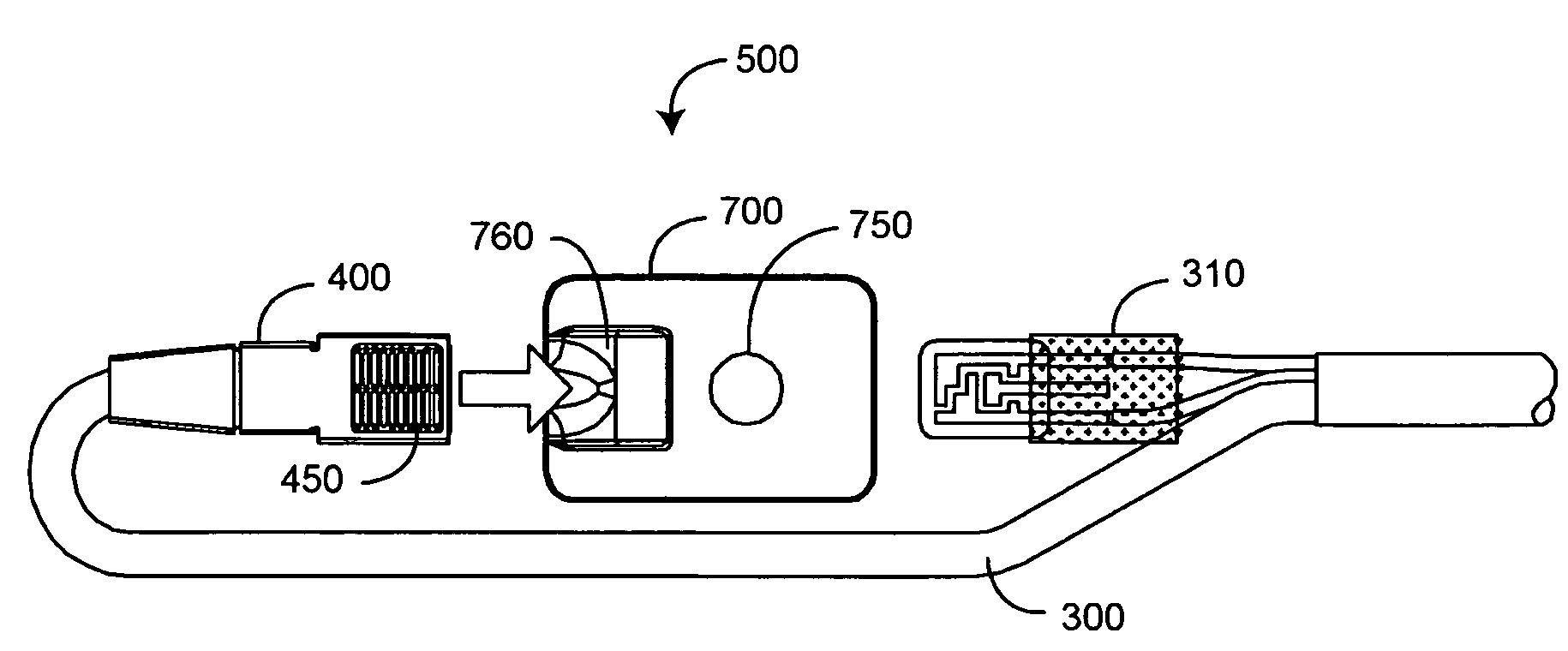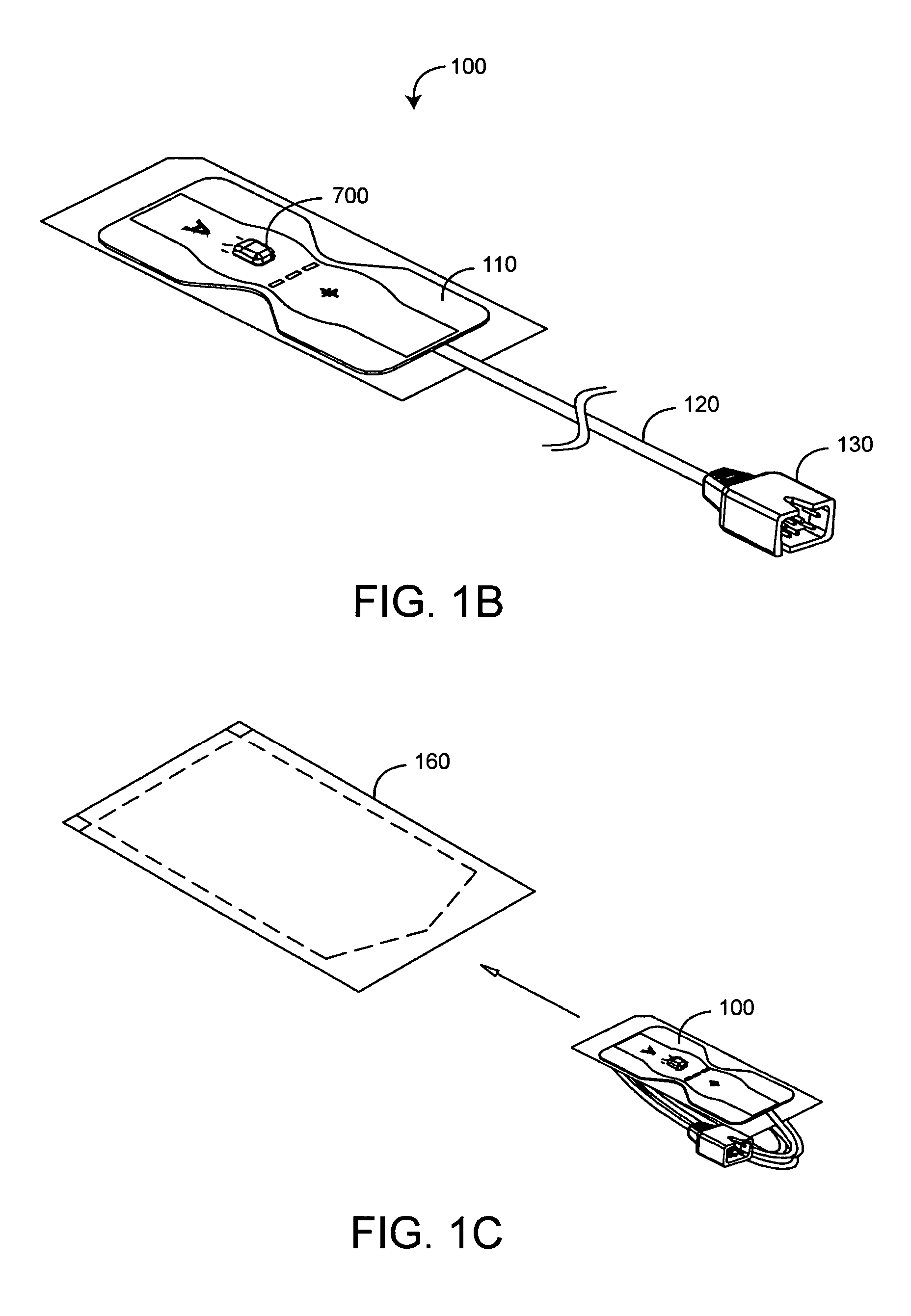Pulse oximetry sensor
a technology of pulse oximetry and sensor, which is applied in the field of pulse oximetry sensor, can solve problems such as corrupting the desired sensor signal, and achieve the effect of reducing optical noise and electromagnetic nois
- Summary
- Abstract
- Description
- Claims
- Application Information
AI Technical Summary
Benefits of technology
Problems solved by technology
Method used
Image
Examples
Embodiment Construction
[0014]FIGS. 1A-C illustrate a pulse oximetry sensor 100 having a body 110, a cable 120 and a connector 130. The body 110 is configured to wrap around a fingertip and incorporates an emitter 310 (FIG. 2) and a detector 350 (FIG. 2) that provide physiological measurements responsive to a patient's blood oxygen saturation, as described above. The body 110 also incorporates a flexible housing 700 configured to enclose a shielded detector assembly 400 (FIG. 2). Advantageously, the flexible housing 700 optically shields the detector 350 (FIG. 2), blocking ambient and piped light. The cable 120 provides electrical communication between the emitter 310 (FIG. 2) and detector 350 (FIG. 2) and the connector 130. The connector 130 is adapted to a patient cable, which electrically and mechanically connects the sensor 100 to a monitor (not shown).
[0015]FIG. 2 further illustrates a pulse oximetry sensor 100 having a cable assembly 300, a shielded detector assembly 400, a housing assembly 500, a ta...
PUM
 Login to View More
Login to View More Abstract
Description
Claims
Application Information
 Login to View More
Login to View More - R&D
- Intellectual Property
- Life Sciences
- Materials
- Tech Scout
- Unparalleled Data Quality
- Higher Quality Content
- 60% Fewer Hallucinations
Browse by: Latest US Patents, China's latest patents, Technical Efficacy Thesaurus, Application Domain, Technology Topic, Popular Technical Reports.
© 2025 PatSnap. All rights reserved.Legal|Privacy policy|Modern Slavery Act Transparency Statement|Sitemap|About US| Contact US: help@patsnap.com



